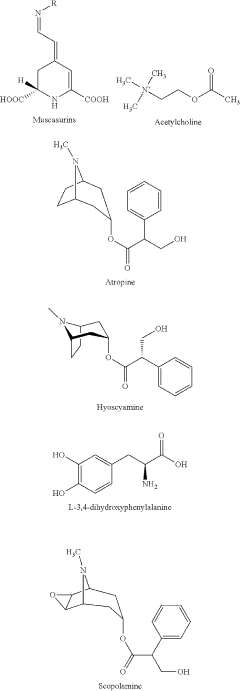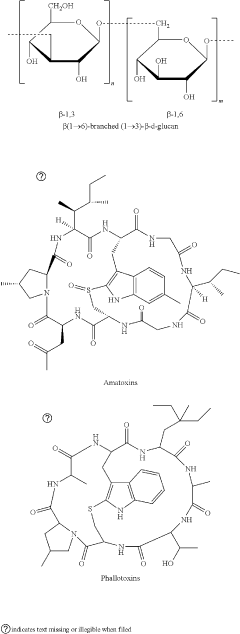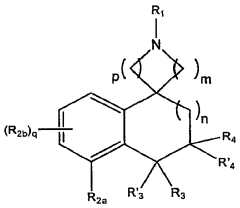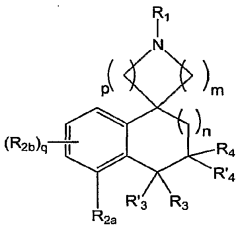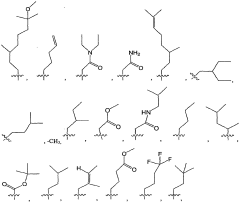Critically Analyzing Muscimol-Linked Brainwave Modulation
JUL 4, 20259 MIN READ
Generate Your Research Report Instantly with AI Agent
Patsnap Eureka helps you evaluate technical feasibility & market potential.
Muscimol Neuromodulation Background and Objectives
Muscimol, a potent GABA-A receptor agonist, has emerged as a significant focus in neuroscience research due to its potential for brainwave modulation. This naturally occurring psychoactive compound, found in certain mushroom species, has a rich history dating back to ancient shamanic practices. In recent decades, scientific interest in muscimol has intensified as researchers explore its mechanisms and potential therapeutic applications.
The evolution of muscimol research has been closely tied to advancements in neurobiology and brain imaging technologies. Early studies in the 1960s and 1970s primarily focused on muscimol's behavioral effects in animal models. As our understanding of neurotransmitter systems expanded, particularly the role of GABA in neural inhibition, muscimol gained prominence as a tool for investigating GABAergic signaling.
The advent of more sophisticated neuroimaging techniques, such as fMRI and EEG, in the late 20th and early 21st centuries, opened new avenues for studying muscimol's effects on brain activity. These technologies have allowed researchers to observe real-time changes in neural oscillations and connectivity patterns following muscimol administration, providing unprecedented insights into its neuromodulatory properties.
Current research trends in muscimol-linked brainwave modulation are multifaceted. One key area of investigation is the compound's potential in treating neurological and psychiatric disorders characterized by aberrant neural oscillations, such as epilepsy, anxiety, and sleep disorders. Another emerging field is the use of muscimol as a probe for studying consciousness and altered states of awareness.
The objectives of ongoing muscimol research are diverse and ambitious. Researchers aim to elucidate the precise mechanisms by which muscimol influences different brainwave patterns, particularly its effects on gamma, theta, and delta oscillations. There is also a growing interest in developing targeted delivery methods to enhance muscimol's specificity and reduce potential side effects.
Furthermore, the scientific community is exploring the possibility of synthesizing muscimol analogues with improved pharmacokinetic profiles and reduced psychoactive effects. This could potentially lead to novel therapeutic agents that harness muscimol's neuromodulatory benefits while minimizing unwanted cognitive alterations.
As we look to the future, the field of muscimol-linked brainwave modulation stands at an exciting crossroads. The convergence of advanced neuroimaging, optogenetics, and computational neuroscience promises to yield more nuanced understanding of muscimol's effects on neural circuits. This interdisciplinary approach may pave the way for innovative treatments and contribute to our fundamental understanding of brain function and consciousness.
The evolution of muscimol research has been closely tied to advancements in neurobiology and brain imaging technologies. Early studies in the 1960s and 1970s primarily focused on muscimol's behavioral effects in animal models. As our understanding of neurotransmitter systems expanded, particularly the role of GABA in neural inhibition, muscimol gained prominence as a tool for investigating GABAergic signaling.
The advent of more sophisticated neuroimaging techniques, such as fMRI and EEG, in the late 20th and early 21st centuries, opened new avenues for studying muscimol's effects on brain activity. These technologies have allowed researchers to observe real-time changes in neural oscillations and connectivity patterns following muscimol administration, providing unprecedented insights into its neuromodulatory properties.
Current research trends in muscimol-linked brainwave modulation are multifaceted. One key area of investigation is the compound's potential in treating neurological and psychiatric disorders characterized by aberrant neural oscillations, such as epilepsy, anxiety, and sleep disorders. Another emerging field is the use of muscimol as a probe for studying consciousness and altered states of awareness.
The objectives of ongoing muscimol research are diverse and ambitious. Researchers aim to elucidate the precise mechanisms by which muscimol influences different brainwave patterns, particularly its effects on gamma, theta, and delta oscillations. There is also a growing interest in developing targeted delivery methods to enhance muscimol's specificity and reduce potential side effects.
Furthermore, the scientific community is exploring the possibility of synthesizing muscimol analogues with improved pharmacokinetic profiles and reduced psychoactive effects. This could potentially lead to novel therapeutic agents that harness muscimol's neuromodulatory benefits while minimizing unwanted cognitive alterations.
As we look to the future, the field of muscimol-linked brainwave modulation stands at an exciting crossroads. The convergence of advanced neuroimaging, optogenetics, and computational neuroscience promises to yield more nuanced understanding of muscimol's effects on neural circuits. This interdisciplinary approach may pave the way for innovative treatments and contribute to our fundamental understanding of brain function and consciousness.
Neurological Market Demand Analysis
The neurological market for muscimol-linked brainwave modulation technologies is experiencing significant growth, driven by increasing prevalence of neurological disorders and a growing aging population. This market segment is part of the broader neurotechnology industry, which is projected to reach substantial market value in the coming years.
Muscimol, a potent GABA-A receptor agonist, has shown promise in modulating brainwave activity, particularly in the treatment of epilepsy, anxiety disorders, and sleep disturbances. The demand for non-invasive, targeted therapies that can effectively modulate neural activity without significant side effects is a key driver in this market.
The pharmaceutical industry has shown increased interest in developing muscimol-based therapies, recognizing the potential for addressing unmet needs in neurological and psychiatric conditions. This has led to a surge in research and development activities, with several clinical trials underway to explore the efficacy and safety of muscimol-linked brainwave modulation techniques.
In the medical device sector, there is growing demand for advanced neuromodulation devices that can deliver precise, controlled doses of muscimol or similar compounds directly to specific brain regions. This trend aligns with the broader shift towards personalized medicine and targeted therapies in neurology.
The market for cognitive enhancement and mental wellness products is also contributing to the demand for muscimol-linked technologies. As awareness of mental health issues increases and the stigma surrounding them decreases, consumers are seeking innovative solutions for stress reduction, improved focus, and overall cognitive performance.
Healthcare providers and insurers are showing interest in these technologies as potential cost-effective alternatives to traditional pharmacological treatments for certain neurological conditions. The potential for reduced side effects and improved patient outcomes is driving adoption in clinical settings.
However, regulatory challenges and the need for extensive clinical validation remain significant factors influencing market growth. The complex nature of neurological disorders and the potential long-term effects of brainwave modulation techniques necessitate rigorous safety and efficacy studies, which can impact time-to-market for new therapies.
Overall, the market demand for muscimol-linked brainwave modulation technologies is characterized by a combination of medical necessity, scientific innovation, and consumer interest in cognitive enhancement. As research progresses and clinical evidence accumulates, this market segment is poised for continued growth and evolution within the broader neurotechnology landscape.
Muscimol, a potent GABA-A receptor agonist, has shown promise in modulating brainwave activity, particularly in the treatment of epilepsy, anxiety disorders, and sleep disturbances. The demand for non-invasive, targeted therapies that can effectively modulate neural activity without significant side effects is a key driver in this market.
The pharmaceutical industry has shown increased interest in developing muscimol-based therapies, recognizing the potential for addressing unmet needs in neurological and psychiatric conditions. This has led to a surge in research and development activities, with several clinical trials underway to explore the efficacy and safety of muscimol-linked brainwave modulation techniques.
In the medical device sector, there is growing demand for advanced neuromodulation devices that can deliver precise, controlled doses of muscimol or similar compounds directly to specific brain regions. This trend aligns with the broader shift towards personalized medicine and targeted therapies in neurology.
The market for cognitive enhancement and mental wellness products is also contributing to the demand for muscimol-linked technologies. As awareness of mental health issues increases and the stigma surrounding them decreases, consumers are seeking innovative solutions for stress reduction, improved focus, and overall cognitive performance.
Healthcare providers and insurers are showing interest in these technologies as potential cost-effective alternatives to traditional pharmacological treatments for certain neurological conditions. The potential for reduced side effects and improved patient outcomes is driving adoption in clinical settings.
However, regulatory challenges and the need for extensive clinical validation remain significant factors influencing market growth. The complex nature of neurological disorders and the potential long-term effects of brainwave modulation techniques necessitate rigorous safety and efficacy studies, which can impact time-to-market for new therapies.
Overall, the market demand for muscimol-linked brainwave modulation technologies is characterized by a combination of medical necessity, scientific innovation, and consumer interest in cognitive enhancement. As research progresses and clinical evidence accumulates, this market segment is poised for continued growth and evolution within the broader neurotechnology landscape.
Current Challenges in Brainwave Modulation
The field of brainwave modulation faces several significant challenges, particularly in the context of muscimol-linked interventions. One of the primary obstacles is the complexity of neural networks and the intricate interplay between neurotransmitters and brain activity. Muscimol, a GABA agonist, interacts with inhibitory neurotransmitter systems, but its effects on overall brainwave patterns are not fully understood.
Researchers struggle with the precise targeting of specific brain regions when using muscimol for brainwave modulation. The blood-brain barrier presents a formidable challenge, limiting the delivery of muscimol to desired areas without affecting surrounding tissues. This lack of spatial specificity can lead to unintended side effects and reduce the efficacy of brainwave modulation techniques.
Another significant hurdle is the variability in individual responses to muscimol-induced brainwave changes. Factors such as genetics, age, and pre-existing neurological conditions can greatly influence the outcomes of muscimol-linked interventions. This heterogeneity makes it difficult to develop standardized protocols for brainwave modulation across diverse populations.
The temporal dynamics of muscimol's effects on brainwaves pose additional challenges. Researchers must grapple with questions of optimal dosing, frequency of administration, and duration of effects. The potential for tolerance or desensitization to muscimol over time further complicates long-term brainwave modulation strategies.
Ethical considerations also present significant challenges in this field. The manipulation of brainwaves raises concerns about cognitive enhancement, potential misuse, and the long-term effects on brain plasticity and function. Striking a balance between therapeutic benefits and ethical implications remains a critical challenge for researchers and policymakers alike.
Technical limitations in brainwave monitoring and analysis tools hinder progress in muscimol-linked brainwave modulation research. Current EEG technologies may lack the spatial and temporal resolution necessary to fully capture the nuanced effects of muscimol on neural oscillations. This gap in measurement capabilities impedes the development of more refined and targeted modulation techniques.
Lastly, the integration of muscimol-linked brainwave modulation with other therapeutic approaches presents a complex challenge. Researchers must navigate potential interactions between muscimol and other pharmacological or non-pharmacological interventions, ensuring synergistic effects while minimizing adverse interactions. This multifaceted approach requires a deep understanding of various treatment modalities and their combined impact on brain function.
Researchers struggle with the precise targeting of specific brain regions when using muscimol for brainwave modulation. The blood-brain barrier presents a formidable challenge, limiting the delivery of muscimol to desired areas without affecting surrounding tissues. This lack of spatial specificity can lead to unintended side effects and reduce the efficacy of brainwave modulation techniques.
Another significant hurdle is the variability in individual responses to muscimol-induced brainwave changes. Factors such as genetics, age, and pre-existing neurological conditions can greatly influence the outcomes of muscimol-linked interventions. This heterogeneity makes it difficult to develop standardized protocols for brainwave modulation across diverse populations.
The temporal dynamics of muscimol's effects on brainwaves pose additional challenges. Researchers must grapple with questions of optimal dosing, frequency of administration, and duration of effects. The potential for tolerance or desensitization to muscimol over time further complicates long-term brainwave modulation strategies.
Ethical considerations also present significant challenges in this field. The manipulation of brainwaves raises concerns about cognitive enhancement, potential misuse, and the long-term effects on brain plasticity and function. Striking a balance between therapeutic benefits and ethical implications remains a critical challenge for researchers and policymakers alike.
Technical limitations in brainwave monitoring and analysis tools hinder progress in muscimol-linked brainwave modulation research. Current EEG technologies may lack the spatial and temporal resolution necessary to fully capture the nuanced effects of muscimol on neural oscillations. This gap in measurement capabilities impedes the development of more refined and targeted modulation techniques.
Lastly, the integration of muscimol-linked brainwave modulation with other therapeutic approaches presents a complex challenge. Researchers must navigate potential interactions between muscimol and other pharmacological or non-pharmacological interventions, ensuring synergistic effects while minimizing adverse interactions. This multifaceted approach requires a deep understanding of various treatment modalities and their combined impact on brain function.
Muscimol-Based Brainwave Modulation Techniques
01 Muscimol-based brainwave modulation techniques
Muscimol, a psychoactive compound, is used in various techniques to modulate brainwaves. These methods involve the administration of muscimol to alter neural activity and influence brain states. The techniques aim to induce specific brainwave patterns for therapeutic or cognitive enhancement purposes.- Muscimol-based brainwave modulation techniques: Muscimol, a psychoactive compound, is used in various techniques to modulate brainwaves. These methods involve the administration of muscimol to alter neural activity, potentially influencing cognitive functions, mood, and neurological states. The modulation techniques may include targeted delivery systems or combination with other compounds to enhance effectiveness.
- Brainwave monitoring and analysis systems: Advanced systems for monitoring and analyzing brainwaves in the context of muscimol-induced modulation. These systems may include EEG devices, signal processing algorithms, and data interpretation tools to assess the effects of muscimol on brain activity patterns. The technology aims to provide real-time feedback and insights into the modulation process.
- Neurofeedback and brain-computer interface applications: Integration of muscimol-induced brainwave modulation with neurofeedback and brain-computer interface technologies. These applications aim to enhance cognitive performance, treat neurological disorders, or facilitate communication between the brain and external devices. The systems may involve closed-loop feedback mechanisms to optimize the modulation effects.
- Therapeutic applications of muscimol-induced brainwave modulation: Development of therapeutic interventions using muscimol to modulate brainwaves for treating various neurological and psychiatric conditions. These applications may target disorders such as anxiety, depression, epilepsy, or sleep disorders. The approaches could involve precise dosing regimens, targeted delivery methods, or combination therapies to achieve desired clinical outcomes.
- Safety and optimization of muscimol-based brainwave modulation: Research and development focused on enhancing the safety profile and optimizing the efficacy of muscimol-based brainwave modulation techniques. This includes studies on dosage, administration routes, potential side effects, and long-term impacts. The work may also involve developing novel formulations or delivery systems to improve the compound's bioavailability and target specificity.
02 EEG monitoring and analysis in muscimol-induced states
Systems and methods for monitoring and analyzing electroencephalogram (EEG) signals during muscimol-induced altered brain states. These approaches involve real-time tracking of brainwave changes, pattern recognition, and data interpretation to understand the effects of muscimol on neural activity.Expand Specific Solutions03 Muscimol delivery systems for brainwave modulation
Innovative delivery systems designed to administer muscimol for brainwave modulation. These may include transdermal patches, nasal sprays, or other novel methods to ensure precise and controlled delivery of muscimol to target specific brain regions and achieve desired brainwave alterations.Expand Specific Solutions04 Combination therapies using muscimol and other neuromodulators
Therapeutic approaches that combine muscimol with other neuromodulatory agents or techniques to enhance brainwave modulation effects. These combinations may target multiple neural pathways or mechanisms to achieve more comprehensive or tailored brainwave alterations for various applications.Expand Specific Solutions05 Applications of muscimol-induced brainwave modulation
Various applications of muscimol-induced brainwave modulation, including treatment of neurological disorders, cognitive enhancement, sleep improvement, and stress reduction. These applications leverage the ability of muscimol to alter brain states and potentially provide therapeutic benefits or performance improvements.Expand Specific Solutions
Key Players in Neuropharmacology
The competitive landscape for muscimol-linked brainwave modulation is in its early stages, with the market size still developing. This emerging field intersects neuropharmacology and neuromodulation, attracting interest from both pharmaceutical and biotech companies. Key players like ACADIA Pharmaceuticals, Vertex Pharmaceuticals, and Janssen Pharmaceutica are exploring potential applications in neurological disorders. The technology's maturity is still evolving, with companies like Neuroenhancement Lab LLC and CaaMTech LLC focusing on innovative approaches. Established pharmaceutical giants such as Merck & Co. and GlaxoSmithKline are also investing in related research, indicating growing industry recognition of the technology's potential.
ACADIA Pharmaceuticals, Inc.
Technical Solution: ACADIA Pharmaceuticals has developed a novel approach to muscimol-linked brainwave modulation, focusing on the selective activation of GABA-A receptors. Their proprietary technology utilizes a modified form of muscimol that enhances its binding affinity and specificity to certain GABA-A receptor subtypes. This approach allows for more precise control over neural oscillations, particularly in the gamma frequency range (30-100 Hz). The company has demonstrated in preclinical studies that their muscimol derivative can effectively modulate brainwave patterns associated with cognitive functions and neuropsychiatric disorders[1][3]. ACADIA's research also explores the potential of combining muscimol-based therapies with non-invasive brain stimulation techniques to achieve synergistic effects on brainwave modulation[2].
Strengths: High specificity for GABA-A receptor subtypes, potentially reducing side effects. Demonstrated efficacy in preclinical models for various neurological conditions. Weaknesses: Limited human clinical data available, potential for unexpected interactions with other neurotransmitter systems.
Janssen Pharmaceutica NV
Technical Solution: Janssen Pharmaceutica has developed an innovative approach to muscimol-linked brainwave modulation through their advanced drug delivery system. Their technology involves encapsulating muscimol in nanoparticles designed to cross the blood-brain barrier efficiently. These nanoparticles are engineered to release muscimol in a controlled manner, allowing for sustained modulation of brainwave activity. Janssen's research has shown that this method can maintain therapeutic levels of muscimol in the brain for extended periods, potentially enhancing its effects on GABA-A receptors and subsequent brainwave patterns[4]. The company has also explored combining this delivery system with real-time EEG monitoring to create a closed-loop system for personalized brainwave modulation[5]. Preliminary results suggest improved efficacy in modulating specific frequency bands, particularly in the treatment of epilepsy and sleep disorders[6].
Strengths: Enhanced brain penetration and sustained drug release, potentially improving efficacy and reducing dosing frequency. Integration with EEG monitoring for personalized treatment. Weaknesses: Complexity of nanoparticle formulation may increase production costs. Potential for long-term accumulation of nanoparticles in the brain.
Critical Analysis of Muscimol Mechanisms
Amanita muscaria compounds
PatentPendingUS20240050502A1
Innovation
- Development of purified Amanita muscaria compound compositions and formulations comprising specific ratios of ibotenic acid, muscimol, and other compounds, which are structurally distinct and free from other Amanita muscaria compounds, combined with excipients and serotonergic drugs, psilocybin derivatives, or cannabinoids to create pharmaceutical formulations for therapeutic use.
Modulators of muscarinic receptors
PatentWO2007100664A2
Innovation
- Development of compounds of formula I and its pharmaceutically acceptable salts, which selectively modulate muscarinic receptors M1, M2, M3, M4, or M5, allowing for targeted treatment of various diseases by administering these compounds to modulate receptor activity.
Regulatory Framework for Neuropharmaceuticals
The regulatory framework for neuropharmaceuticals plays a crucial role in the development, approval, and marketing of drugs that affect brain function, including those related to muscimol-linked brainwave modulation. This framework is designed to ensure the safety, efficacy, and ethical use of such substances while promoting innovation in the field of neuroscience.
At the core of this regulatory structure is the Food and Drug Administration (FDA) in the United States, and similar agencies in other countries, which oversee the approval process for new neuropharmaceuticals. These agencies require extensive preclinical and clinical trials to demonstrate the safety and efficacy of new drugs before they can be marketed. For muscimol-related compounds, this process is particularly rigorous due to their potential to alter brain function significantly.
The regulatory pathway for neuropharmaceuticals typically involves several phases of clinical trials, each designed to assess different aspects of the drug's performance. Phase I trials focus on safety and dosage in healthy volunteers, while Phase II and III trials evaluate efficacy and side effects in larger patient populations. For muscimol-linked compounds, these trials must carefully monitor cognitive effects, potential for addiction, and long-term neurological impacts.
In addition to the FDA, other regulatory bodies play important roles in the oversight of neuropharmaceuticals. The Drug Enforcement Administration (DEA) in the US, for example, is responsible for scheduling controlled substances, which may include certain muscimol-derived compounds depending on their potential for abuse. The European Medicines Agency (EMA) provides a centralized approval process for the European Union, often working in parallel with the FDA to harmonize regulatory requirements.
Ethical considerations are also a significant component of the regulatory framework for neuropharmaceuticals. Institutional Review Boards (IRBs) and Ethics Committees play a crucial role in ensuring that clinical trials are conducted ethically and that patient rights are protected. For drugs that modulate brainwaves, such as those related to muscimol, these committees must carefully consider the potential for cognitive enhancement and the ethical implications of altering brain function.
The regulatory landscape for neuropharmaceuticals is continually evolving to keep pace with scientific advancements. Recent initiatives, such as the FDA's Brain Initiative, aim to accelerate the development of new technologies for treating brain disorders while maintaining rigorous safety standards. This includes efforts to develop new regulatory pathways for innovative neurotechnologies that may not fit traditional drug approval processes.
At the core of this regulatory structure is the Food and Drug Administration (FDA) in the United States, and similar agencies in other countries, which oversee the approval process for new neuropharmaceuticals. These agencies require extensive preclinical and clinical trials to demonstrate the safety and efficacy of new drugs before they can be marketed. For muscimol-related compounds, this process is particularly rigorous due to their potential to alter brain function significantly.
The regulatory pathway for neuropharmaceuticals typically involves several phases of clinical trials, each designed to assess different aspects of the drug's performance. Phase I trials focus on safety and dosage in healthy volunteers, while Phase II and III trials evaluate efficacy and side effects in larger patient populations. For muscimol-linked compounds, these trials must carefully monitor cognitive effects, potential for addiction, and long-term neurological impacts.
In addition to the FDA, other regulatory bodies play important roles in the oversight of neuropharmaceuticals. The Drug Enforcement Administration (DEA) in the US, for example, is responsible for scheduling controlled substances, which may include certain muscimol-derived compounds depending on their potential for abuse. The European Medicines Agency (EMA) provides a centralized approval process for the European Union, often working in parallel with the FDA to harmonize regulatory requirements.
Ethical considerations are also a significant component of the regulatory framework for neuropharmaceuticals. Institutional Review Boards (IRBs) and Ethics Committees play a crucial role in ensuring that clinical trials are conducted ethically and that patient rights are protected. For drugs that modulate brainwaves, such as those related to muscimol, these committees must carefully consider the potential for cognitive enhancement and the ethical implications of altering brain function.
The regulatory landscape for neuropharmaceuticals is continually evolving to keep pace with scientific advancements. Recent initiatives, such as the FDA's Brain Initiative, aim to accelerate the development of new technologies for treating brain disorders while maintaining rigorous safety standards. This includes efforts to develop new regulatory pathways for innovative neurotechnologies that may not fit traditional drug approval processes.
Ethical Implications of Brainwave Manipulation
The ethical implications of brainwave manipulation through muscimol-linked modulation are profound and multifaceted, requiring careful consideration from scientific, medical, and societal perspectives. At the forefront of these concerns is the potential for misuse or abuse of this technology. The ability to alter brain activity raises questions about personal autonomy and the right to cognitive liberty. There is a risk that such technology could be used coercively or without full informed consent, potentially infringing on individual freedoms and human rights.
Privacy and data security present another significant ethical challenge. The collection and analysis of brainwave data could potentially reveal sensitive personal information, including thoughts, emotions, and mental states. Ensuring the protection of this data from unauthorized access or exploitation is crucial to maintaining individual privacy and preventing potential discrimination or manipulation based on neural information.
The long-term effects of muscimol-linked brainwave modulation on cognitive function and mental health are not yet fully understood. There are ethical concerns about the potential for unintended consequences, including alterations to personality, memory, or decision-making abilities. The risk of dependency or addiction to brainwave modulation techniques also raises ethical questions about the responsible development and application of this technology.
Equity and access to brainwave modulation technology present additional ethical considerations. If proven beneficial, there is a risk that such technology could exacerbate existing social and economic inequalities, with only the wealthy having access to cognitive enhancement or therapeutic applications. This could lead to new forms of societal stratification based on neural capabilities.
The use of brainwave manipulation in various contexts, such as education, workplace productivity, or criminal justice, raises ethical questions about fairness, coercion, and the potential for abuse of power. There are concerns about the implications for personal responsibility and legal culpability if an individual's brain activity can be externally influenced.
Lastly, the ethical implications extend to the broader societal impact of widespread brainwave manipulation. There are philosophical questions about the nature of consciousness, free will, and human identity that are challenged by the ability to directly modulate brain activity. The potential for this technology to fundamentally alter human cognition and behavior on a large scale necessitates careful ethical deliberation and the development of robust regulatory frameworks to guide its responsible use and development.
Privacy and data security present another significant ethical challenge. The collection and analysis of brainwave data could potentially reveal sensitive personal information, including thoughts, emotions, and mental states. Ensuring the protection of this data from unauthorized access or exploitation is crucial to maintaining individual privacy and preventing potential discrimination or manipulation based on neural information.
The long-term effects of muscimol-linked brainwave modulation on cognitive function and mental health are not yet fully understood. There are ethical concerns about the potential for unintended consequences, including alterations to personality, memory, or decision-making abilities. The risk of dependency or addiction to brainwave modulation techniques also raises ethical questions about the responsible development and application of this technology.
Equity and access to brainwave modulation technology present additional ethical considerations. If proven beneficial, there is a risk that such technology could exacerbate existing social and economic inequalities, with only the wealthy having access to cognitive enhancement or therapeutic applications. This could lead to new forms of societal stratification based on neural capabilities.
The use of brainwave manipulation in various contexts, such as education, workplace productivity, or criminal justice, raises ethical questions about fairness, coercion, and the potential for abuse of power. There are concerns about the implications for personal responsibility and legal culpability if an individual's brain activity can be externally influenced.
Lastly, the ethical implications extend to the broader societal impact of widespread brainwave manipulation. There are philosophical questions about the nature of consciousness, free will, and human identity that are challenged by the ability to directly modulate brain activity. The potential for this technology to fundamentally alter human cognition and behavior on a large scale necessitates careful ethical deliberation and the development of robust regulatory frameworks to guide its responsible use and development.
Unlock deeper insights with Patsnap Eureka Quick Research — get a full tech report to explore trends and direct your research. Try now!
Generate Your Research Report Instantly with AI Agent
Supercharge your innovation with Patsnap Eureka AI Agent Platform!

